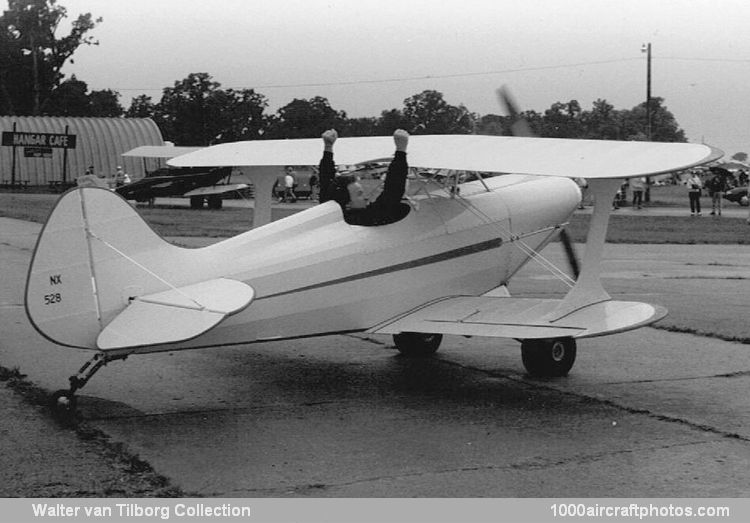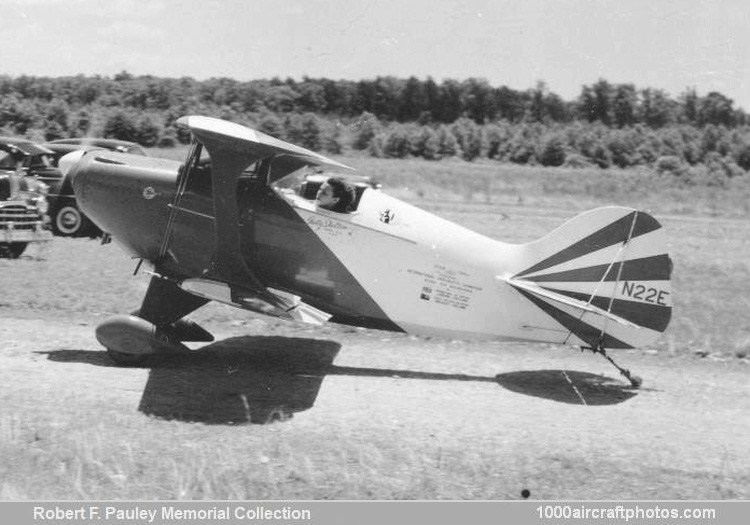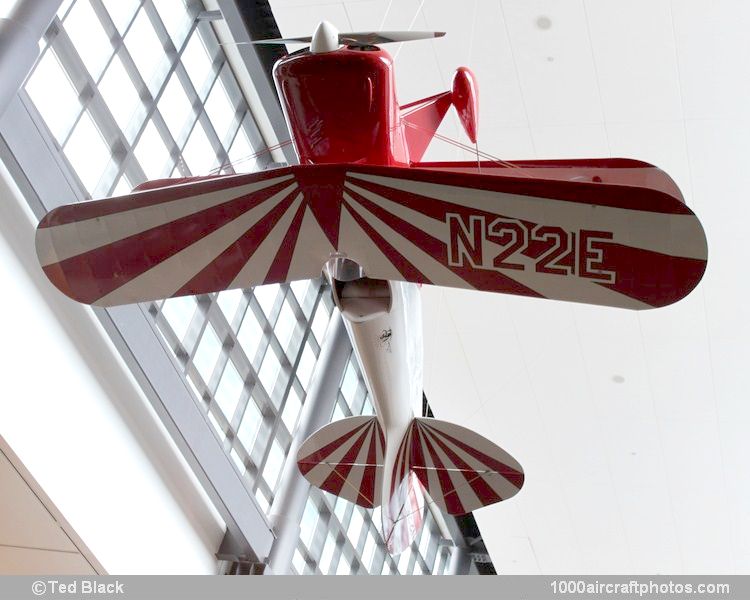Photographed at St. Augustine, Florida, USA, September 19, 1990, source unknown
06/05/2016. Remarks by
Walter van Tilborg: "The S-1 Special was an original design homebuilt aircraft of Curtis Pitts and became very popular among amateur builders worldwide. The design for many years dominated the world aerobatic championships and competitions. The S-1 was later also factory-built by several companies and appeared in many variants.
Work on the design started in 1942 and the prototype Pitts Special (NX52650), built by the designer, was first flown on August 28, 1945 and had a 55 hp Lycoming O-145 engine. It later received a 90 hp Franklin, but it was lost in an accident later in 1945 after it had been sold by Pitts.
It was followed by a second aircraft with an 85 hp Continental C85, which first flew in 1946. This aircraft (NX86401) had a slightly increased wingspan, a beefed up construction and deeper fuselage.
Betty Skelton (N22E) (
Robert Pauley Collection)
Reregistered N22E, it was later acquired by Betty Skelton, a famous US female aerobatic pilot, it was nick-named Little Stinker. This second Pitts Special later received an 135 hp Lycoming and finally an 170 hp Lycoming engine.
(N22E) (
Ted Black Collection)
Presently the N22E is preserved at NASM's Steven F. Udvar-Hazy Center, Chantilly, Virginia.
A third S-1 (N8M) with an 125-135 hp Lycoming O-290 appeared in 1949 and was built for Caro Bayley, also for air show work. This aircraft was later lost during a fire after a forced landing.
During the 1950s several aircraft were built as homebuilt project and with full co-operation of the designer. In 1962 Curtis Pitts finally decided to put plans for the S-1 on the market and these were available from Pitts Aviation Enterprises.
The Pitts S-1C was the first amateur construction model and suited for engines up to 150 hp. This model, like the earlier S-1 aircraft, had ailerons on the lower wings only and a flat section wing airfoil. Many hundreds were built worldwide. In 1995 the marketing of the S-1C plans was taken over by Steen Aero Lab, Inc.
To celebrate Curtis Pitts' 75th birthday and the 45th anniversary of the first S-1, a group named The Friends of Curtis Pitts built an almost exact replica of the original Pitts Special in 1991, the NX528 pictured on top of the page. Subsequently it was donated to the
EAA AirVenture Museum."


